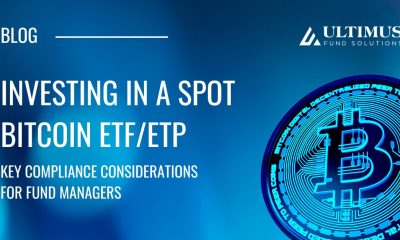Join us for part one of a three part series on The True Cost of Mutual Fund Distribution. Part one will focus on product placement. To read part two, click here. To read part three, click here.
Northern Lights Distributors, LLC (NLD) believes a successful mutual fund distribution strategy requires a solid competitive philosophy, process, and expertise as well as consistent performance and excellent client service. It also requires investment managers who thoughtfully plan and invest in a scalable sales and marketing strategy. Distribution has a variety of associated costs. The amount of associated costs is dependent on each firm’s individual goals and its place in the mutual fund sales cycle. While some investment managers may have large goals, seek broad sales and marketing exposure, and desire expansive platform availability, others may pursue a more finite approach.
Distribution Growth Cycle
NLD developed the distribution growth cycle model to assist investment advisers in matching their current distribution characteristics with potential opportunities. This allows managers to tactically develop their distribution plans to align with where they are within the cycle, along with associated opportunities. NLD has identified four phases in the distribution cycle: Raising Capital, Emerging Manager, Growing Manager, and Established Partners. Each distribution phase has distinct characteristics, challenges, and opportunities.
Elements of successful distribution
Each element of successful distribution has inherent costs. NLD has created a summary of these potential costs and questions to consider as advisers develop their distribution strategies. “Understanding the True Cost of Mutual Fund Distribution” will cover the three elements of successful distribution strategies:
- Product Placement
- Active Sales & Marketing
- Tracking Capabilities
Product Placement
All non-direct investors purchase mutual funds through an intermediary provider: custodian, broker-dealer, bank, trust, or third party asset management program. To better fit the individual end client’s needs, intermediary firms may offer a variety of programs with multiple investment vehicles through either a commission or fee-based structure. Understanding the product placement requirements and the cost of such platforms is the first step in planning for successful distribution.
As investment advisers assess each firm’s goals and platform wish list, they should consider the potential access fees for all intermediaries. There is a common misconception regarding product shelf space. Some people believe that more platform availability equates to more opportunity for potential sales success. This may be true in some cases, but only with a combination of other sales and marketing efforts. The reality is that more placement will also mean higher costs. Unfortunately, there is not a magic number of platforms the fund should be on. Advisers should thoroughly consider the wish list and right size the opportunity to meet the current growth cycle, making adjustments as the fund grows.
There are typically two types of onboarding fees that an intermediary may require; fees for due diligence review and on-going platform maintenance fees.
Due Diligence Fees – Intermediaries may charge an upfront, one time due diligence fee for the review of a mutual fund for potential product placement. This is normally a hard dollar cost determined prior to reviewing a fund. Paying this fee does not guarantee the fund will be approved. (Investment manager expense)
Platform Maintenance Fees – Intermediaries may charge the mutual fund an ongoing annual fee. The annual fee is normally a fixed rate which covers expenses associated with fund maintenance. The maintenance fee may cover on-going CUSIP administration and review. Fee ranges vary across intermediaries. Some charge a per CUSIP fee at a fixed cost with a minimum monthly or annual fee at the fund level, irrespective of asset levels. (May be an investment manager expense, some exceptions may apply)
Intermediary operational expenses may have a broad definition across the target market landscape. Operational expenses may cover the intermediary’s administration and maintenance of client accounts, which may entail various client communication and fund transactions.
Shareholder Servicing Fee – Shareholder servicing fees typically apply to custodians and self-clearing firms and may include, but are not limited to, client communication, such as, delivering fund prospectuses, proxy materials, SAIs, educational publications, and other fund information. In addition, servicing may include direct client support via telephone for wire transfers, when applicable. (Fund expense, with potential differences billable to the investment manager)
Networking Fees – Networking operational services provide mutual fund account reconciliation and dividend processing at the client account level. This service has three reporting types, to be agreed upon with the intermediary. Centralized connectivity across intermediaries may require fund/SERV participation. Networking services are typically charged annually for each shareholder account. (Fund expense, with potential differences billable to the investment manager)
Sub-accounting and Administrative Services (may be referred to as “Omnibus”) – Sub-accounting services are meant to provide a uniform and efficient trading and reconciliation process for platforms with accounts across multiple disciplines and funds. This structure seeks to minimize transaction cost, allowing for block trading and execution across fund account holders. Centralized connectivity across broker-dealers may require an Omni/SERV subscription. (Fund expenses, with potential differences billable to the investment manager)
Consult the transfer agent and intermediary relationship on the various options to best suit current and future needs.
Cost associated with certain sales and marketing activities may be paid as a fund expense. Intermediaries may have program/platform fees and or revenue share cost associated with mutual fund support that are not paid by the fund. Advisers should work with their relationship manager to discuss which activities are not covered.
12b-1 Fees – These fees are used to pay for expenses associated with mutual fund distribution. This includes, but not limited to, fees paid for marketing and selling fund shares. Such costs could include compensating individuals or organizations who sell fund shares, advertising and designing, printing, and mailing sales literature to potential investors. Certain 12b-1 fee plans may include “shareholder service fees,” which pay for servicing, such as organizations responding to investor inquiries on their investments. (Included in the fund’s expense ratio)
Platform Partnership Fee – Intermediaries may have optional and/or qualifying sales and marketing partnership programs that may support meeting and conference sponsorship, access to branches for educational and marketing promotions, and receipt of supplemental sales data. Fees can be in addition to, or standalone from the revenue share fees. (Hard dollars billed directly to the investment adviser)
Revenue Share – Revenue sharing payments are in addition to 12b-1 fees and other operational expenses, disclosed in the fund prospectus. Intermediaries may require revenue share and is at the sole discretion of the intermediary. The fees may be associated with sales and assets under management, and may be in addition to, or standalone from the platform partnership fees. (Basis points billed directly to the investment adviser)
Questions Advisers Should Consider
- How many intermediary platforms do you wish to have your fund available on?
- What are the individual costs of each platform? Do you have enough demand at the specific intermediary to justify the expense?
- Do you desire additional sales and marketing intermediary partnerships, such as home office access? If so, what is the cost per intermediary?
- Do you have the marketing resources to support partnership relationships?
Disclaimer: The fees and the underlying services are subject to change at the intermediaries’ discretion.


